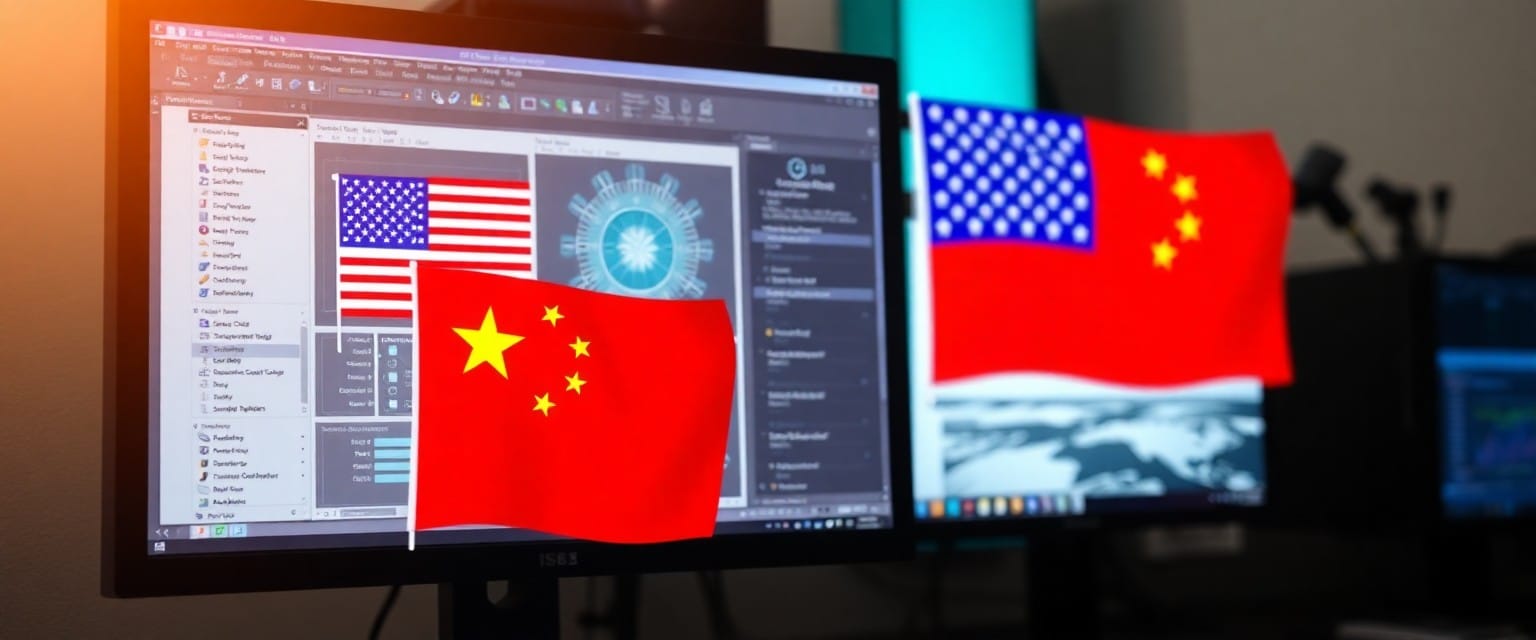Design giants in the American chip industry have secured a temporary relief that allows you to continue selling advanced technology to China, avoiding immediate disruptions. This significant pause offers your business a valuable window to navigate the complex landscape shaped by stricter export controls. However, the situation remains tense and uncertain, as evolving regulations could restrict access again in the near future. Understanding these developments is imperative for your strategic planning and maintaining competitive advantage in the global semiconductor market.
The Crucial Pivot: Regulatory Changes and Market Impact
Recent shifts in U.S. export controls have reshaped how you navigate the China semiconductor market. The reintroduced restrictions, though somewhat softened, still impose significant compliance burdens, particularly around emerging technologies like advanced AI chips. While this pause grants temporary access, the evolving regulatory landscape demands agile adaptation, influencing supply chains and strategic partnerships. Your ability to anticipate further policy tweaks will directly affect market positioning and revenue streams amid intense U.S.-China tech competition.
Key Policy Developments Affecting Chip Exports
The Biden administration’s revisions to export controls maintain a focus on keeping the most sophisticated chip technology out of Chinese hands, especially components used in supercomputing and AI. The updated framework eases some restrictions on existing products but introduces new rules around semiconductor manufacturing equipment sold to China, forcing companies to constantly re-evaluate product classifications and end-user checks.
Implications for American Tech Giants
You’ll find that companies like NVIDIA and AMD are now balancing robust sales avenues with stringent compliance risks. With China representing a large share of their revenue, these firms face unpredictable disruptions from potential policy expansions, prompting accelerated investments in alternative markets and domestic R&D to safeguard growth.

Economic Lifelines: Why This Reprieve Matters
The temporary pause on tighter export restrictions gives you and the American chipmakers a vital breather. With the reprieve, companies like Nvidia and AMD can sustain revenue streams from China, which accounted for over 30% of global semiconductor sales. This window allows ongoing investments in R&D and capacity expansion without the immediate hit from reduced market access, preserving jobs and stabilizing the fragile tech ecosystem that powers everything from smartphones to servers.
Recovery Strategies for Leading Chip Manufacturers
Major players are accelerating partnerships and supply diversification as you recalibrate to uncertain trade climates. Firms such as Intel are investing an additional $20 billion in U.S.-based fabs while simultaneously boosting collaboration with foundries in Taiwan and South Korea. Strategic stockpiling of key components and pivoting toward high-margin segments, like AI accelerators, also form part of your toolkit to navigate this evolving landscape.
The Broader Influence on Global Supply Chains
This reprieve momentarily stabilizes supply chains strained by geopolitical pressures, allowing critical semiconductor inputs and finished chips to flow with fewer disruptions. You benefit as downstream industries—including automotive and consumer electronics—avoid sudden shortages, helping to maintain production schedules and market availability.
Delays in export restrictions ease shipping bottlenecks and reduce inventory volatility for semiconductor components sourced worldwide. For example, Taiwan’s TSMC ramps of chip output stay coordinated with global demand cycles, preventing price spikes. However, the situation underscores persistent risks: localized disruptions in one region ripple across interconnected supplier networks spanning Asia, Europe, and North America. This period offers a breathing space to reevaluate logistics strategies and enhance resilience against future trade shocks.
Competitive Landscape: The Stakes of Technology Transfer
The global chip industry balances on a knife’s edge as technology transfer between the U.S. and China intensifies. Every decision impacts supply chains, innovation cycles, and geopolitical power. Key players like Intel and NVIDIA navigate export controls that aim to curb China’s access to cutting-edge semiconductor tools without stifling growth. Your understanding of these dynamics reveals how sensitive tech sharing shapes not just markets but also the broader balance of technological supremacy.
Balancing Innovation and National Security
Export restrictions attempt to limit China’s ability to produce advanced chips, yet broad controls risk hindering your company’s market opportunities and slowing innovation. The government’s challenge lies in crafting rules that protect national security interests without cutting off vital revenue streams or global collaboration that fosters breakthroughs. Striking this balance means constantly adjusting policies as technologies evolve and as China’s semiconductor capabilities expand.
Emerging Rivalries: U.S. vs. China in Chip Development
The semiconductor contest has escalated beyond trade to a direct race in research, fabrication, and design. China’s push to boost domestic manufacturing with initiatives like “Made in China 2025” has prompted the U.S. to tighten export controls on equipment vital for chips at the 7-nanometer node and below. This rivalry drives accelerated R&D spending, with the U.S. investing billions to maintain its lead, while Chinese firms ramp up efforts to develop indigenous alternatives.

Future Outlook: Potential Scenarios for U.S.-China Tech Relations
The current pause on stricter export controls offers a narrow window for U.S. chipmakers to sustain their foothold in China, yet uncertainties loom large. You should anticipate shifts depending on diplomatic developments, with scenarios ranging from gradual easing to severe restrictions that could reshape global supply chains. Market players will need to stay agile as regulatory tides fluctuate, impacting investment flows and partnership strategies over the next several years.
Long-Term Effects of Current Policy on Market Trends
Ongoing export relief sustains demand but also intensifies competition among U.S. firms vying to maximize their China exposure before policies potentially tighten again. You’ll see supply chain diversification efforts accelerate, as companies hedge risks by investing in alternative production hubs while still leveraging Chinese markets. This dynamic could prolong innovation cycles but simultaneously heighten cost pressures and strategic recalibrations across the semiconductor sector.
Predictions from Industry Experts on Future Sales Dynamics
Analysts forecast that while short-term sales may remain stable or grow modestly, sales to China could abruptly decline if stricter controls return. Top executives emphasize vigilance, citing that companies with diversified portfolios will better navigate abrupt policy shifts. You can expect heightened investment in R&D and alternative markets, positioning firms to mitigate sudden demand contractions tied directly to political developments.
Industry leaders highlight that firms closely monitoring geopolitical signals are best positioned to adapt swiftly. For example, firms like NVIDIA and AMD have already begun expanding partnerships in Southeast Asia to offset potential losses in China, anticipating that a sudden policy reversal could slash revenues by up to 20% within a year. This foresight underscores the importance of nimble strategies, as experts predict that long-term resilience hinges on balancing China sales with growth in emerging markets and domestic innovation capabilities.
Strategic Responses: How American Companies are Adapting
Reassessing Market Priorities and Targets
You’re seeing many U.S. chipmakers recalibrate their focus away from China’s volatile market, intensifying efforts in regions like Europe, Japan, and South Korea. Companies such as NVIDIA and AMD are expanding partnerships and customer bases in these stable environments to offset future risks. Meanwhile, sales strategies are evolving to target sectors less exposed to export restrictions, including automotive and AI-driven industries, reinforcing resilience against geopolitical upheavals.
Innovative Approaches to R&D Investments
R&D budgets are increasingly channeled into breakthrough technologies like advanced packaging, heterogeneous integration, and AI-optimized chip architectures. American firms are collaborating with government agencies to secure funding aimed at creating next-generation semiconductors with superior performance and security features. This shift ensures your company stays ahead of both innovation curves and regulatory challenges.
Digging deeper, you’ll find that companies such as Intel have increased their U.S.-based R&D spending by over 20% this year, emphasizing research in quantum computing and chiplet designs. Partnerships with national labs and universities drive accelerated prototyping cycles, reducing time-to-market by months. This coordinated investment strategy not only buffers your development pipelines from export restrictions but also strengthens domestic supply chains and safeguards intellectual property amid growing trade tensions.
Final Words
Following this important development, you should understand that the temporary easing of restrictions on American heavyweights in chip design technology highlights the ongoing complexities of global trade with China. This reprieve offers your industry a needed opportunity to navigate the competitive landscape while adapting to evolving regulations. Staying informed and prepared will help you respond effectively to future changes and maintain your strategic position in the market.
Frequently Asked Questions
What recent policy change has the U.S. made regarding chip design software exports to China?
The U.S. Commerce Department has lifted the export license requirements for chip design software sales to China. This change benefits companies like Synopsys, Cadence, and Siemens, allowing them to operate without the previously required licenses.
Which companies are directly impacted by this policy change?
Companies such as Synopsys, Cadence Design Systems, and Siemens AG are directly impacted by this policy change. These firms are major providers of electronic design automation (EDA) software, essential for semiconductor design.
How does this policy change affect the semiconductor industry?
This policy change is expected to facilitate smoother operations for U.S. chip design software companies in China, potentially leading to increased sales and strengthened market presence. It also indicates a shift towards easing trade tensions in the semiconductor sector.
What prompted the U.S. to lift these export restrictions?
The decision to lift these export restrictions is part of a broader trade deal between the U.S. and China aimed at easing some technology-related trade tensions. The move reflects a strategic approach to balance national security concerns with economic interests.
What are the potential implications for future U.S.-China trade relations?
This policy change could signal a thawing in U.S.-China trade relations, particularly in the technology sector. It may pave the way for further negotiations and agreements that could benefit companies in both countries. Source

